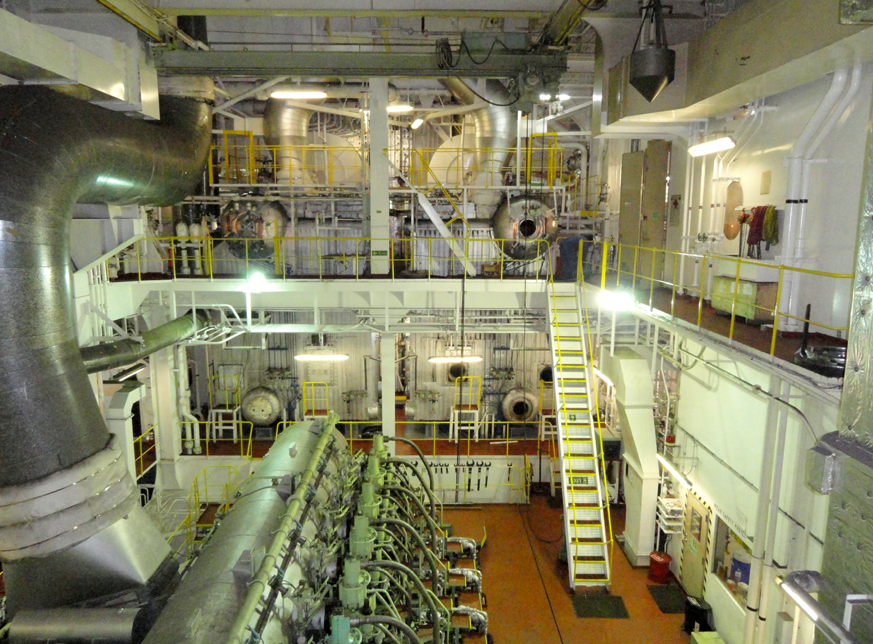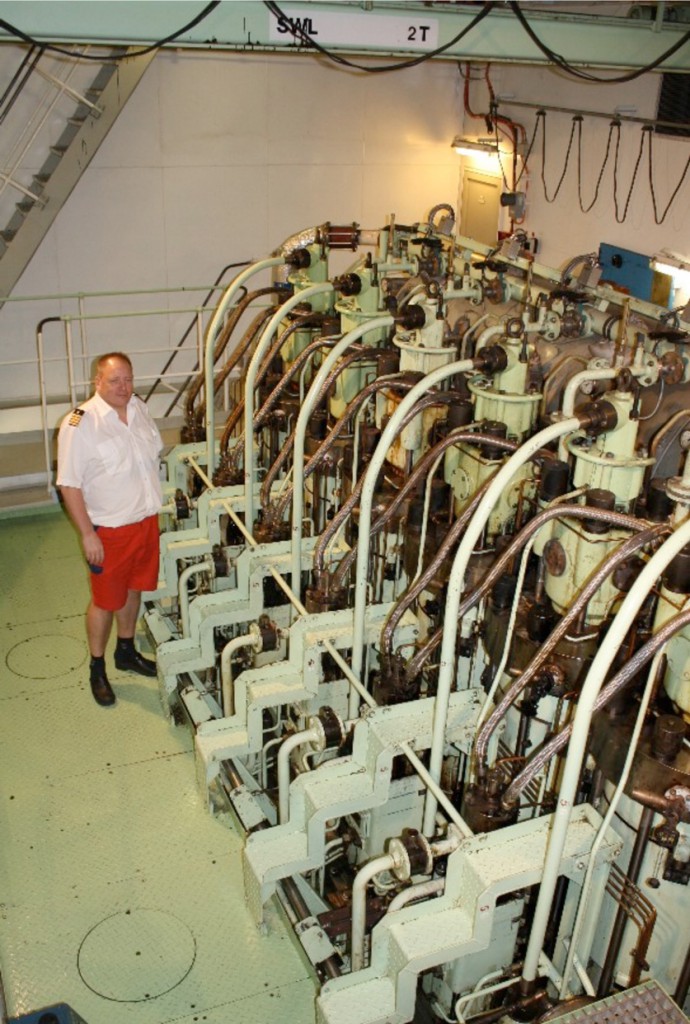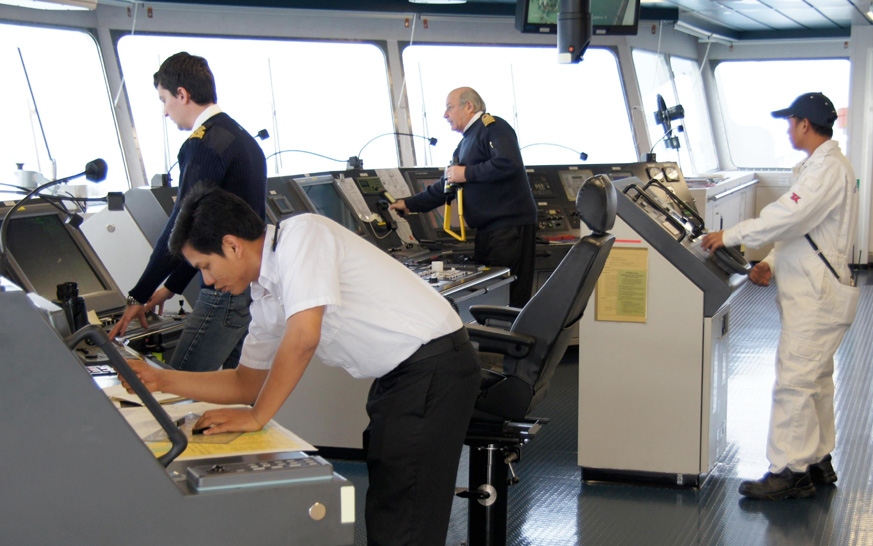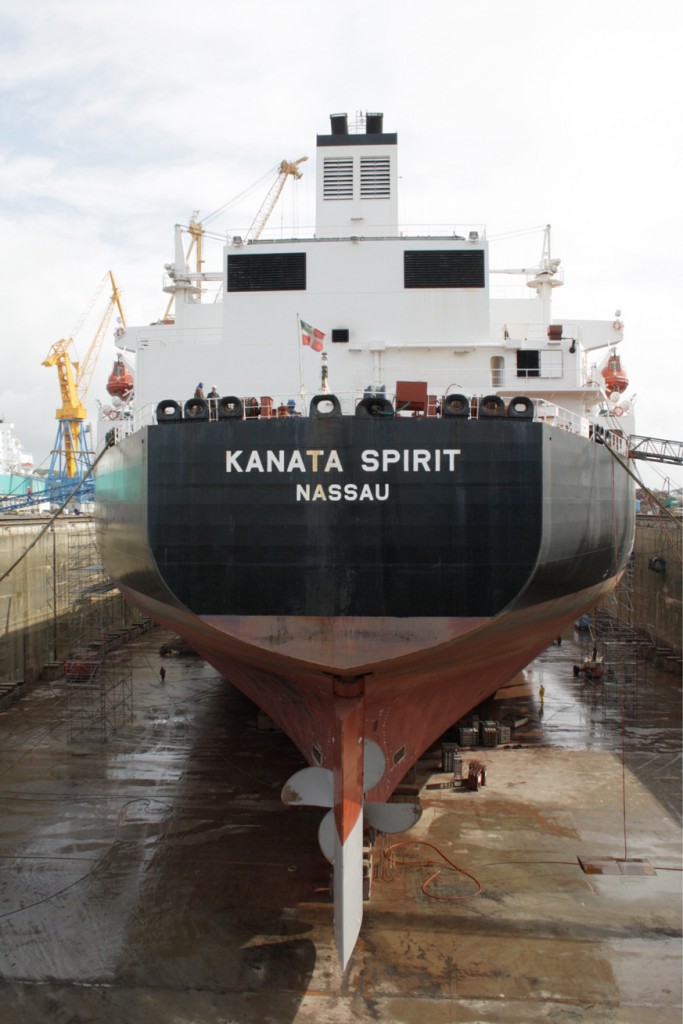Engine Room
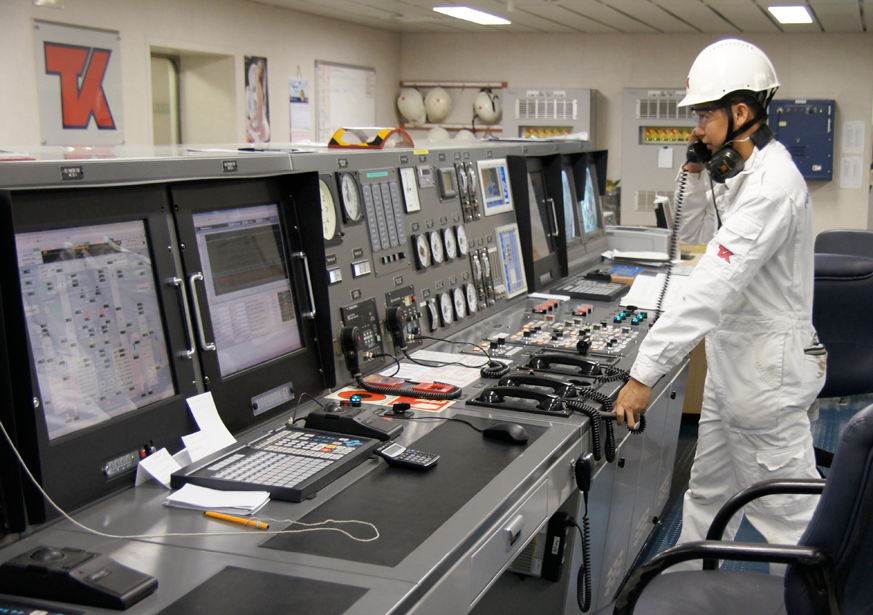
The engine control room in a large modern gas carrier. It is next to the engineroom. This a very important place on the ship as from here, engineers operate the ship’s main engine(s), generators, pumps, and a number of other systems such as the fresh water, air conditioning, refrigeration and sewerage systems. They also monitor the operation of machinery. As you can see in this photograph, there is a lot of electronic equipment involved in operating and monitoring the ship’s machinery. Photograph : Captain Steve Tucker
Hatch Covers
A Hatchcover (Open) B Hatchcover (Closed) C Hatch Coaming Photograph: Grindrod
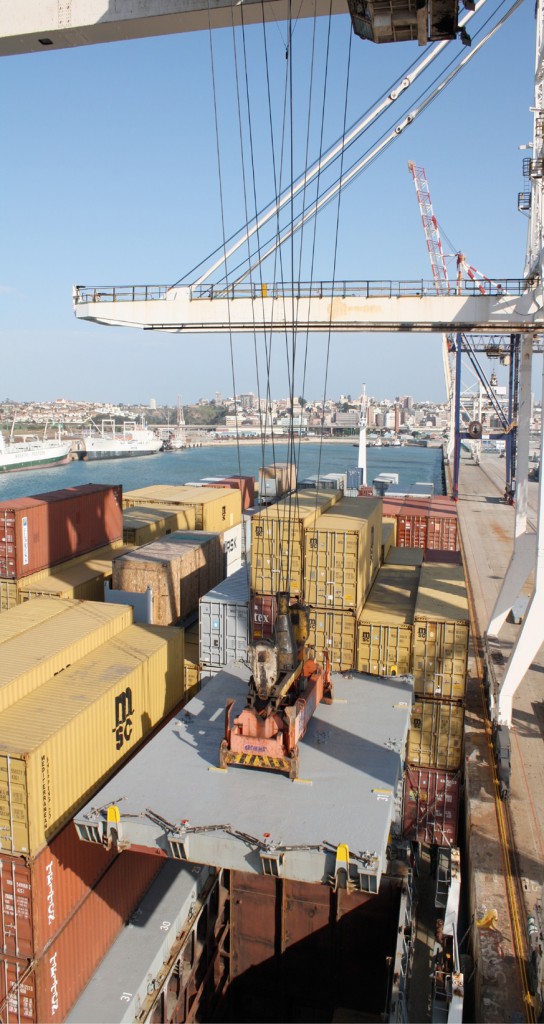
A containership’s hatch cover being lifted off the hatch. The hold can be seen below it. You can also see that containers are stowed on the hatchcovers.
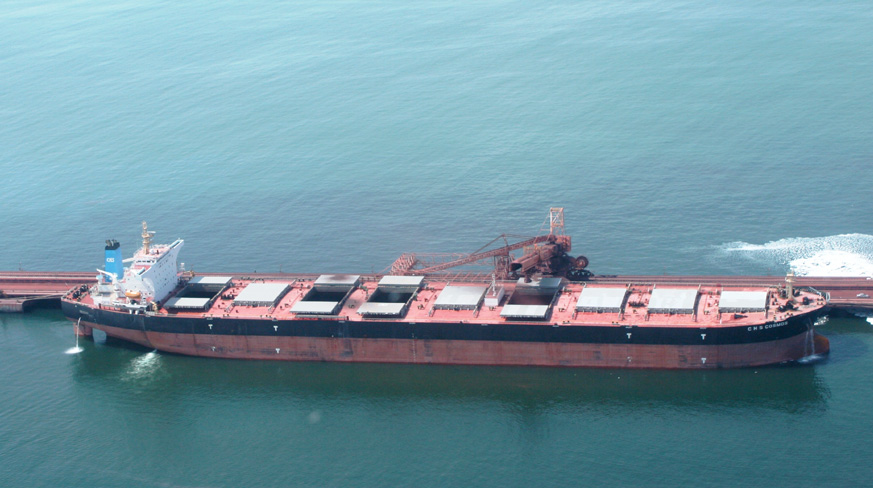
This large ore carrier is loading iron ore at Saldanha Bay. Note the closed hatchcovers and the open hatchcovers that have been moved to the side to allow cargo to be loaded into the holds. Photograph: Andrew Ingpen
Wheelhouse
The bridge team in position when the ship is in confined water such as a narrow strait, entering or leaving harbour, or passing through a canal. The navigating cadet – a trainee officer (in the white shirt) is checking the ship’s position on the navigation chart; a senior officer is monitoring the radar; the captain (known as the Master) is in overall command, and a senior rating is at the helm. (He is steering the ship according to orders given by the Master.) When the ship is manoeuvering in port, in a canal or in a river, a pilot is usually also on the bridge to assist the Master. Photograph : Captain Steve Tucker



